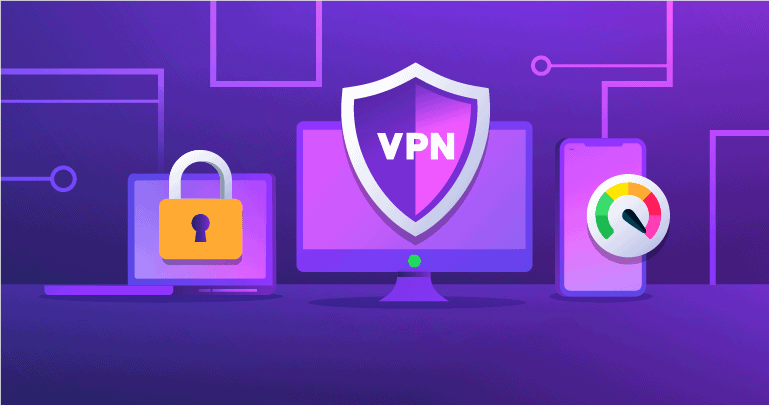How to Keep Employees Engaged in a Remote Working Environment

Flexible working conditions and work/life balance are key ingredients to retain and motivate employees. A recent Owl Labs study revealed that two-thirds of workers would look for another job if their current company does not provide remote working opportunities. A similar survey by Harvard Business Review found that only 5% of employees who are offered the option of working from home would stay with their company for the long term.
Internal communication
Communicating with remote workers has its own set of challenges. For starters, it is harder to keep track of projects and communicate company values. So, how do you get the message across to your remote workers? There are several key ways to ensure your communication efforts are impactful. Listed below are some ways to engage and retain your remote workforce. They will make all the difference! Read on to learn more about each of these tips.
When creating an effective internal communication strategy, make sure you take into account your employees’ needs and preferences. Try to identify the most effective communication channels for your workforce and follow a regular schedule for communicating. Be consistent, as employees will trust you more if you communicate regularly with them. Besides, sending out emails or newsletters isn’t the only way to keep your employees happy. Try using a pulse survey to gauge employee opinions and get valuable insight.
Creating a positive company culture is essential for ensuring employee engagement. An open culture encourages employees to give their input, and acknowledging positive feedback goes a long way. Make sure to recognize positive feedback by giving employees a paycheck. This will also encourage employees to feel appreciated. Communicating regularly with employees will help them remain productive and happy, as well as contribute to the company’s success.
Using technology to communicate is an important way to engage your workforce. Employees are more likely to be engaged if you share important messages with them on an intranet page. Connecteam helps make it easier to communicate with your remote workers and create a common space where they can interact with each other. Connecteam also allows you to share important company messages and acknowledge star employees, birthday wishes, and kudos.
Flexible working conditions
As flexible working patterns become more popular, it can be difficult to manage the level of flexibility. The absence of office hours has given employees more freedom in where they work, when they work, and how they meet deadlines. This flexibility has become more important than ever and it is the duty of managers to offer flexible working conditions for their teams. But as with any other change in the working environment, it takes a lot of planning and leadership to keep employees engaged.
Aside from the physical space, flexible working conditions are important for the health and happiness of employees. Some flex workers may experience the syndrome of “out of sight, out of mind.” This is why it’s vital for employers to set up clear flexible working systems and communicate the standards with clarity. For instance, employers should offer training to staff members to help them navigate flexible working systems. In addition, they should set clear guidelines for employees when it comes to work hours.
The right training and communication are key to the success of flexible work policies. Remote employees require a different management style from those who work in a traditional office. To lead a telecommuting team, leaders must use different communication methods, track productivity daily, and ensure employees feel held accountable. Flexible working arrangements can also help secure better candidates. And, when done right, these programs can lead to a number of performance benefits.
Flexibility is an important part of employee retention, but companies need to be strategic about their strategies. Understanding employee turnover and the level of flexibility employees require can help them determine what types of benefits they’ll enjoy most. They can also make use of the COVID-19 pandemic to accelerate the trend. They will also understand the type of flexibility their employees need to be happy and productive. If you’re not providing enough flexibility, you’re likely to be at a disadvantage when recruiting top talent.
Work/life balance
There are numerous advantages to a remote working environment, including greater flexibility, increased productivity, and decreased stress. But many remote professionals have found the work-life balance difficult to achieve. While it may be difficult for some, work-life integration is possible when approached holistically. A holistic approach to remote working can help you improve your overall work-life balance. Here are some tips to help you find a better work-life balance in a remote working environment.
The flexibility of a remote working environment is often the most important benefit. The freedom to schedule work hours around other commitments can make it harder to achieve a work-life balance. As a result, many remote workers have to adjust their schedules to accommodate homeschooling or other commitments. Working remotely can also affect mental health. In addition to missing work-related events, some workers feel guilty about needing mental health days.
A healthy work-life balance requires establishing boundaries and committing to set aside time for yourself and your family. In a traditional office, you’d be required to devote more time to work than to your personal life. In a remote working environment, however, this isn’t always the case. A healthy work-life balance requires you to set boundaries and commit a specific amount of time to each activity.
Working from home requires some sacrifices. You may have a private office or an extra room in your home, but this doesn’t mean you can’t get personal time. Try to create a schedule that allows for personal time, such as a regular morning routine or an evening workout. This will help you achieve a work-life balance. There are many benefits of working from home, but make sure you don’t forget your personal life.
Mindfulness
Companies can use mindfulness to boost employee morale and engagement. By improving morale, organisations can better accomplish their business objectives and function in a new normal. Employees are more engaged and motivated when they know they’re not being monitored 24 hours a day. Mindfulness training is not just for remote workers, but for people working in any type of location. It can also help employees deal with pandemic situations.
While mindfulness is beneficial for individuals, it can also boost teamwork and engagement. Team members who practice mindfulness have fewer conflicts during work. They also tend to be less likely to escalate tasks into interpersonal conflicts, such as personal attacks. The research findings from UBC are the first to show that mindfulness is also beneficial for remote teams. Mindfulness programs can help workers improve soft skills such as collaboration, communication and negotiation.
Because remote work can increase the likelihood of burnout and chronic stress, companies should offer mindfulness training to their remote employees. By teaching remote employees mindfulness skills, managers can help their employees prevent these problems. Mindfulness helps employees develop self-awareness and combat cognitive overload. Mindfulness practices can also help remote workers recognize burnout and manage it before it becomes a problem. Many remote workers are unaware of the risks of remote working and experience burnout if they are not regularly practicing mindfulness.
The use of mindfulness techniques in the workplace is beneficial for both the employees and the company. The benefits of mindfulness training for employees are many and include better relationships with their supervisors, improved health, happier working attitudes and increased productivity. Employees who practice mindfulness regularly will benefit from the increased mental energy. If they are mindful of their own mental state, they are more likely to be able to deal with any situation that may arise.
Virtual all-hands
If you have a remote workforce, a virtual all-hands meeting can be an excellent way to maintain a high level of engagement. Employees often feel disengaged when they don’t have a good relationship with their remote colleagues, and virtual all-hands meetings can provide a positive reminder of what makes your company unique, cultured, and path forward. In addition to a more traditional all-hands meeting, you can also include a team building activity or some quick online games to engage remote employees in the meeting.
The key to virtual all-hands meetings is communication. By making sure that all employees have the same information and are able to ask questions and share their thoughts, a virtual all-hands meeting can create an environment of inclusion and collaboration. It can also increase employee engagement by creating a stronger sense of community within the company. And in an increasingly remote workplace, communication is the key to employee safety and engagement.
While a virtual all-hands meeting can be a valuable tool for keeping employees engaged, a physical one can be harder to hold without having the full attendance of everyone on your team. Whether you hold the meeting at your company headquarters or in a coffee shop, virtual all-hands meetings are the perfect opportunity to share information with the entire organization. And if you’re a remote business, a virtual all-hands meeting can provide the same benefits as a traditional one.
Keeping the team on track is easier said than done, and all-hands meetings can provide that needed motivation. By allowing employees to ask questions before any meeting, you’ll be sure to get a lot more out of it than you thought possible. Besides, employee participation will improve your company’s morale. Lastly, virtual all-hands meetings are a good opportunity to celebrate achievements within your team and encourage employees to share their views and opinions on topics that matter to them.


